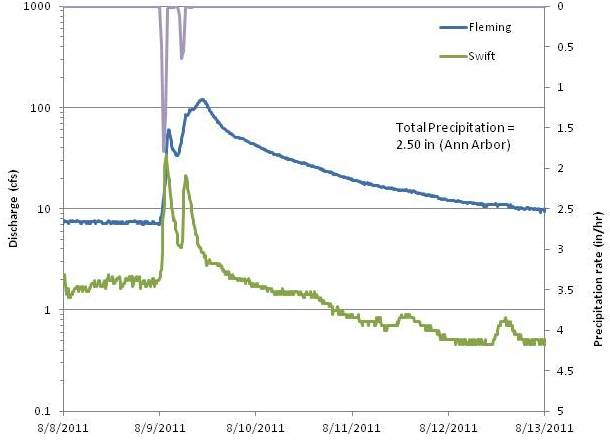I just recently finished the final editing on 6 plans to address impairments to the watershed in Middle Huron Partners and Livingston counties. The problems we addressed in those plans were the things we spend most of our time here at the Council trying to address, namely excessive nutrients, degraded aquatic habitat and periodic bacterial contamination. Each plan is written to address the problem locally and remedial activities are recommended that addressed specific potential problem sources based on extensive monitoring and modeling. One theme cut across all the plans, however: FLOW.
Over the many years we have inhabited this watershed, we have altered the natural stream flows a little bit at a time. We’ve directly changed hydrology by building dams and straightening out channels. We’ve also affected the streams indirectly by hardening the ground surfaces and forcing storm runoff to head quickly to the stream channels rather than working through the soil (groundwater). We now know that this led to channel and streambank erosion, added nutrients, diminished in-stream habitat and washed wastes and pollutants directly into our waterways.

I recently looked at one large storm in August to see what the response was in two neighboring tributaries (see figure). Thanks to conservation of natural cover, Fleming Creek has much less hardened (impervious) surface than does highly paved Swift Run. Their different responses to a large storm (2.5 inches) is stark. Swift Run rises to peaks almost immediately following downpours, that initially, despite its watershed being 6 times smaller than Fleming’s, reach nearly the same height. Within hours, the flow in Swift returns to where it was before the storm, while 3 days later Fleming has yet to do the same. It’s easy to understand, then, why Fleming has much lower pollutant levels and much better populations of stream life.
This is why we encourage, within the recent plans and elsewhere, greater investment in “Green Infrastructure” across the watershed. Look for more to come on this in the near future and ask what your community is doing to improve its green assets, save money in infrastructure cost, and help us restore our streams.



